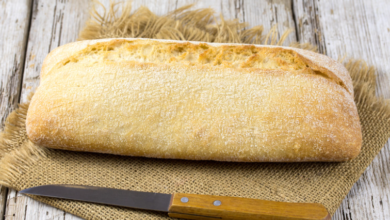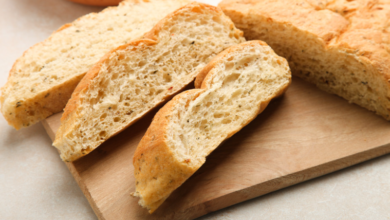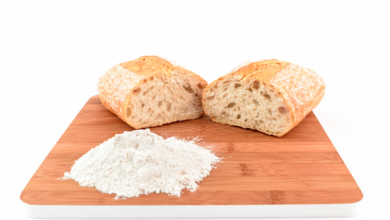How to Make Homemade Ciabatta Bread: It’s So Easy!

What To Know
- Join us as we embark on a culinary journey, guiding you through the intricacies of how to make homemade ciabatta bread that will elevate your taste buds and impress your loved ones.
- Place the dough in a lightly oiled bowl, cover it with plastic wrap, and let it rise in a warm place for 1-2 hours, or until doubled in size.
- Bake the loaves at a higher temperature and for a longer period of time.
Indulge in the tantalizing world of homemade ciabatta bread, where rustic charm meets airy lightness. This delectable Italian classic is renowned for its distinctive open crumb, crispy crust, and the perfect canvas for your culinary creations. Join us as we embark on a culinary journey, guiding you through the intricacies of how to make homemade ciabatta bread that will elevate your taste buds and impress your loved ones.
Ingredients: The Foundation of Flavor
Before we dive into the process, let’s gather the essential ingredients that will form the backbone of your ciabatta masterpiece:
- All-purpose flour or bread flour
- Active dry yeast
- Warm water
- Salt
- Olive oil (optional)
Step 1: Activating the Yeast
In a small bowl, dissolve the yeast in warm water. Allow it to sit for 5-10 minutes, or until the yeast becomes foamy and active. This step ensures that your bread will rise properly.
Step 2: Mixing the Dough
In a large bowl, combine the flour and salt. Create a well in the center and pour in the activated yeast mixture. Gradually add water while mixing with a wooden spoon or your hands. The dough should be slightly sticky but not too wet.
Step 3: Kneading the Dough
Kneading is essential for developing the gluten in the dough, which gives ciabatta its signature chewiness. Knead the dough on a lightly floured surface for 10-15 minutes until it becomes smooth and elastic.
Step 4: First Rise
Place the dough in a lightly oiled bowl, cover it with plastic wrap, and let it rise in a warm place for 1-2 hours, or until doubled in size.
Step 5: Shaping the Loaves
Punch down the risen dough and divide it into two equal portions. Shape each portion into a rectangle or oval loaf. Place the loaves on a baking sheet lined with parchment paper.
Step 6: Second Rise
Cover the loaves with plastic wrap and let them rise for another 30-45 minutes, or until almost doubled in size.
Step 7: Scoring the Loaves
Before baking, use a sharp knife to score the tops of the loaves. This allows the bread to expand during baking and creates the distinctive ciabatta crumb.
Step 8: Baking the Loaves
Preheat your oven to 450°F (230°C). Bake the loaves for 20-25 minutes, or until golden brown and crusty.
Step 9: Cooling the Loaves
Remove the loaves from the oven and let them cool on a wire rack before slicing and enjoying.
The Joy of Homemade Ciabatta
Congratulations! You have now mastered the art of how to make homemade ciabatta bread. Savor the fruits of your labor as you enjoy the rustic charm and irresistible flavor of this Italian culinary masterpiece.
Embrace the Versatility of Ciabatta
The beauty of ciabatta lies in its versatility. Pair it with your favorite soups, stews, and salads. Top it with cheese, meats, and vegetables to create delectable sandwiches. Or simply enjoy it as is, with a drizzle of olive oil and a sprinkle of salt.
Tips for Perfect Ciabatta
- Use high-quality flour for optimal flavor and texture.
- Knead the dough thoroughly to develop the gluten.
- Let the dough rise properly to ensure a light and airy crumb.
- Score the loaves deeply to allow for expansion during baking.
- Bake the loaves at a high temperature to create a crispy crust.
Frequently Asked Questions
Q: Why is my ciabatta bread dense?
A: The dough may not have been kneaded enough or the yeast may not have been activated properly.
Q: How can I make my ciabatta bread more crusty?
A: Bake the loaves at a higher temperature and for a longer period of time.
Q: Can I use other flours to make ciabatta bread?
A: Yes, you can experiment with different flours such as whole wheat flour or rye flour to create unique flavors and textures.





